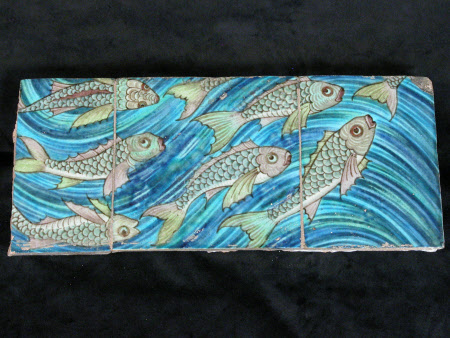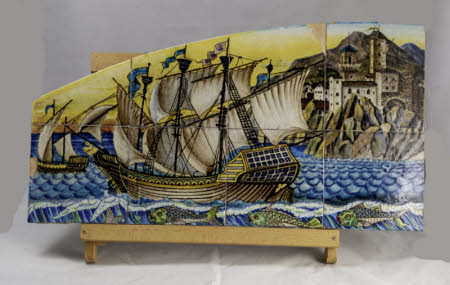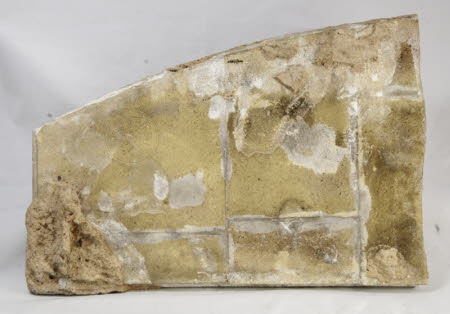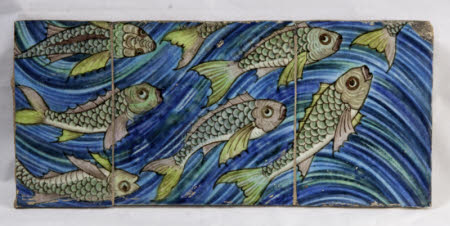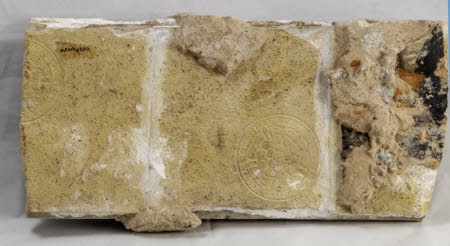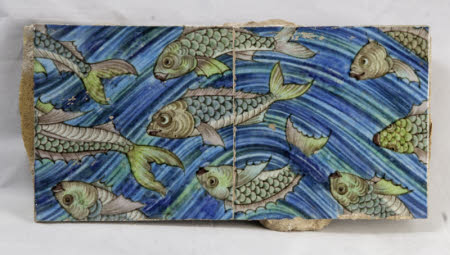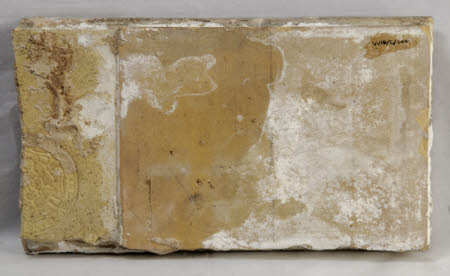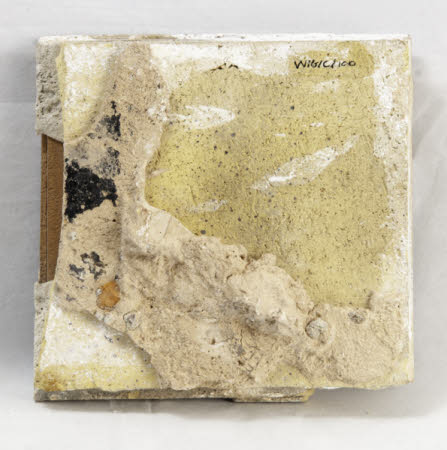Tile set
William Frend De Morgan (London 1839 - London 1917)
Category
Ceramics
Date
1875 - 1900
Materials
Pottery
Measurements
160 mm (L); 160 mm (W)
Place of origin
England
Order this imageCollection
Wightwick Manor, West Midlands
NT 1287282
Caption
The theme of the sea was a major source of inspiration for William De Morgan, with galleons being one of his favourite motifs. This seascape features a set of 25 tiles depicting galleons at full sail with the backdrop of a town on the cliffs. Many of the animals featured on De Morgan’s tiles are usually depicted as being aggressive in nature, but the fish on the bottom of the set and on the boarder tiles look somewhat unintelligent and can be seen playing carelessly amongst the waves.
Summary
Set of 25 de Morgan tiles from the drawing room fireplace at the Castle, Woolacombe, North Devon. Painted with a seascape, galleons at full sail, before town on cliffs, border tiles decorated with green fish on swirling blue ground.
Full description
William Frend De Morgan (1839 – 1917) was one of the most important potters of the late nineteenth century, an innovator in both design and technique. His wide range of design sources is matched by his interest in different potting and glazing techniques. This tile set features a total of 25 De Morgan tiles where were originally from the drawing room fireplace at the Castle, Woolacombe, North Devon. (The castle was built in 1897 by Colonel Percival Spencer Unfrenille Pickering. His sister was Evelyn Pickering the artist who married William De Morgan. Colonel Pickering and his sister Evelyn's mother was Anna Maria who was the sister of Sir Walter Specer Stanhope). This seascape shows galleons and full sail and the background shows a town on the cliffs. The boarder tiles are decorated with green fish on a swirling blue sea. De Morgan adopted an Eastern colour palette of deep and vibrant colours and his designs mixed geometric designs with almost mythical creatures within lustrously glazed tiles. The theme of the sea was a major source of inspiration for De Morgan’s Arts and Crafts ceramics and his wife Evelyn’s paintings. Galleons were one of De Morgan’s favourite motifs, developing eighteen distinct designs. The design of the ships were inspired by Medieval and Tudor ships shown in manuscript illustrations such as those carrying the hero’s of Morte d’Arthur, or the warring kings of Froissant. De Morgan’s galleon designs are distinctive for their use of stylised waves, giant fish, dolphins and sea monsters. These are ships of the imagination and are often in full sail with overstated flags and banners, being of a more decorative nature rather than sea-worthy. Many of his animals are depicted as aggressive and can be seen attacking other animals, but in contrast De Morgan’s fish are self consciously decorative and do not look very intelligent. The fish design proved very useful to De Morgan as he adapted them into linear designs by turning the fish into a serpentine shape, exaggerating the fins so that they almost became wings. In this set of tiles, the fish can be seen to undulate through the linear patterns in the sea, chasing each other and playing in the waves with one fish even being on its back. Though De Morgan’s business was not financially a success, the tiles that he produced were much appreciated in the nineteenth century and appeal today to a growing group of collectors and ceramic experts.
Provenance
Donated to the National Trust 1974.
Makers and roles
William Frend De Morgan (London 1839 - London 1917), maker

